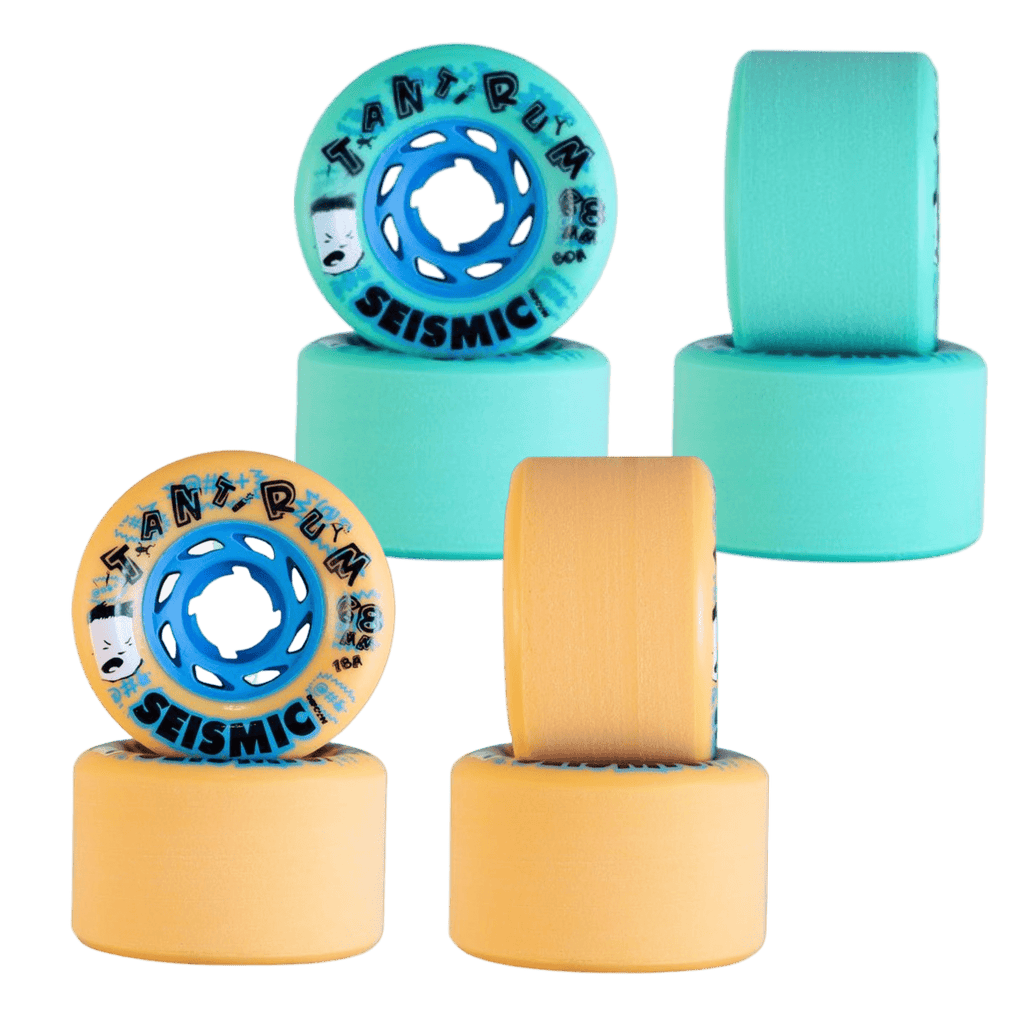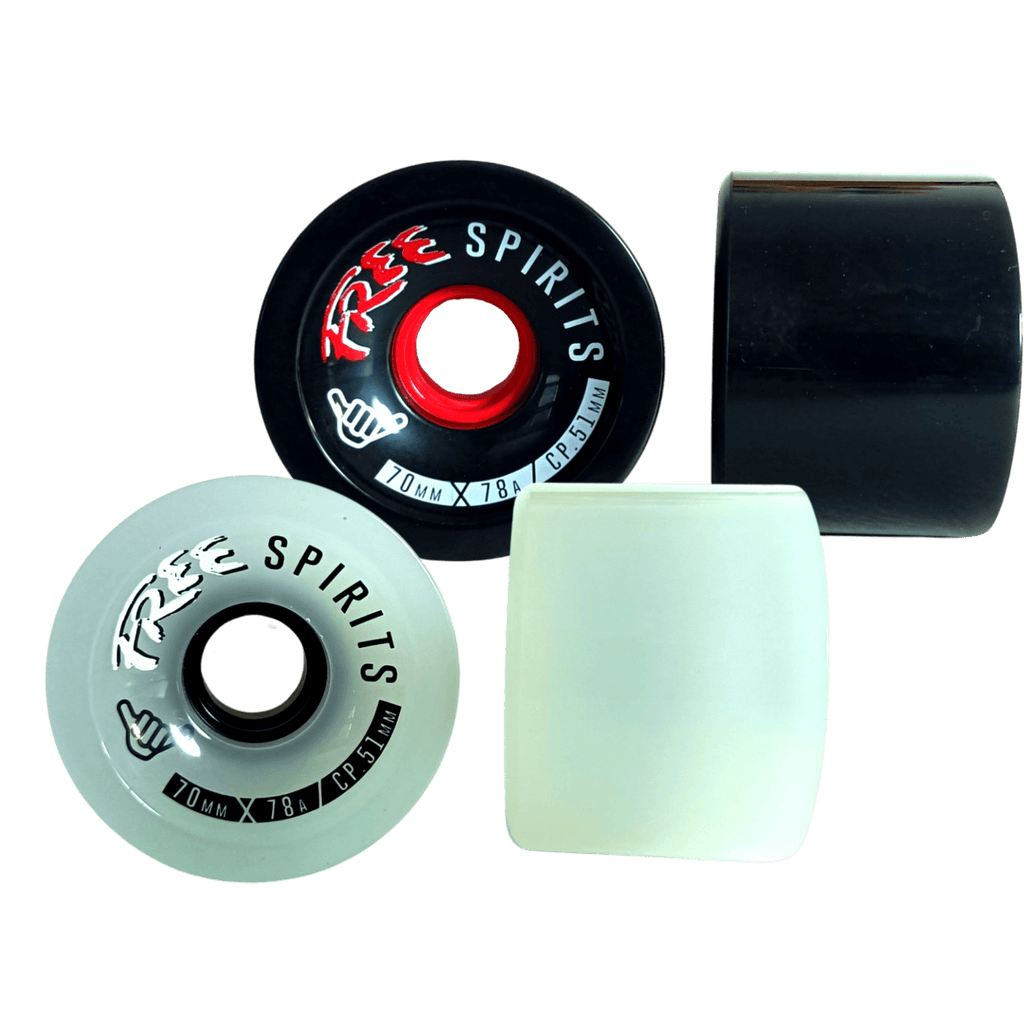
Longboard Buying Guide: Freeride
Freeride
Freeride longboarding as we know it is a relatively new discipline in the world of skateboarding.
Choosing Your Freeride Wheels
Covered in this Section (in order of importance)
Grab a wheel around 68-72mm
Round lip, more slip. (Yes, this is a good thing!)
This will depend on your weight, but the 80-86a range is a good place to stay
Centerset wheels give you a solid foundation to start!
Depends on the wheel itself, but a slimmer wheel will be a bit easier to slide.
1. Choosing Wheel Diameter
As a general rule, wheels in the 68-72mm diameter range will be the ideal size for a freeride wheel. Smaller wheels run the risk of wearing out too quickly. Larger wheels will be more likely to wheelbite. As an added bonus, smaller wheels are more likely to leave better ‘thane lines. (‘Thane lines are the lines left on the pavement after a radical slide. It’s like the longboarding equivalent of a dog marking his territory, but with less of an awkward silence ‘cause it would be weird if we all did that... ‘thane lines! Woo!)
Click on a product to see more details.
2. Choosing Lip Profile
The lip profile of a wheel determines how much “push-back” you’ll get from a wheel during a slide and how easily they will release into a slide. Plain and simple: Wheels with round lips make better freeride wheels. They slide out more predictably and with less effort than their sharp lipped counterparts which gives them a more enjoyable ride all around. This section is nice and short because that’s a simple concept. Now take a deep breath and keep goin! You’re almost finished.
Click on a product to see more details.
Additional Info
"I've seen Duke Degen riding some sharp lip, offset, 86.66a wheels for freeride... Are you guys lying to me?!" you ask... No, we are not lying. Duke is a beast from another planet and has his own customs and traditions. Like we've mentioned numerous times: You can freeride just about any setup, but we're just trying to stick to the basics and let you go from there.
3. Choosing The Durometer
This determines how soft the wheel is. There seems to be a plethora of differing opinions on what durometer is best for a freeride wheel. Despite what your friends are telling you, a harder wheel may not be in your best interest. Sure, it may slide more easily, but it may be uncontrollable. As a general rule: the heavier a rider is, the harder his or her wheel should be. Other factors in consideration (such as the size and shape) will affect the way a wheel will perform but, for the most part, the durometer is a good indicator of how a wheel will perform.
Riders under 150lbs will most likely enjoy a freeride wheel in the 78-83a range. Riders from 150-180lbs may find a wheel in the 81-84a range to be in their best interest. Riders over 180lbs may find that the most appropriate wheel for their weight is in the 82-86a range.
Does this mean a smaller rider can't use an 86a wheel? Or that a larger rider can't use an 80a wheel? Of course not. For the smaller rider, however, a harder wheel may feel "icy" and slip out when they don't want it to. For the heavier rider, a softer wheel may feel slow and get an uneven wear pattern more easily. Many wheels (such as Orangatang and Abec 11 products) offer different durometers for their various styles of wheels. Be sure to read the description and variations so you don’t overlook any important info.
4. Choosing Core Placement
The core placement of a wheel (how far into the wheel the bearings sit) can change the feel of how a wheel breaks into (or returns from) a slide. All-in-all, the effect given by the amount of offset in a freeride wheel may not be something you notice until you're deep into the complex world of freeride longboarding components. We have, however, learned through various online polls, customer feedback and our own experiences that centerset wheels are a great choice for someone getting into freeride longboarding. Having a centerset wheel means you can flip it over if it begins to wear unevenly in an effort to reverse the wear pattern. More importantly, the way centerset wheels break in to slides is nice and predictable. This means less time learning, and more time sliding!
Click on a product to see more details.
Additional Info
Many riders have their own idea of what core placement makes a “good freeride wheel”. Some riders you meet will probably mention a sideset wheel being great for freeride. This is also true! Sideset wheels feature a core that is all the way to the side of the wheel. These wheels have a driftier feeling than centersets (meaning they won’t grip as predictably or “hold a line” as well), which is why we’d suggest trying a set of these after you get a set of centersets so you can feel the subtle differences.
5. Choosing Wheel Width
A wider wheel is going to provide more resistance against the slide than a slimmer wheel, so it's a good idea to go with a slimmer wheel to start. If you're worried about how wide is too wide, don't be. The width is less important than the other factors so it should only be used as the final factor in deciding between multiple wheels.








